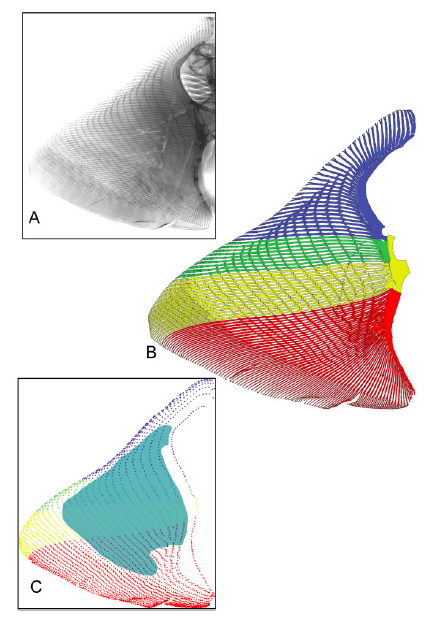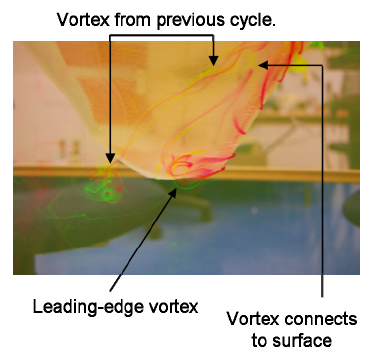Watch the video above and you will better understand the high I am still experiencing after a week of fieldwork. I traveled to Mexico to study the size of whale sharks, but now that I am back I find my thoughts lingering on Manta ray swimming. You may not see it in the video above but Mantas possess superhero powers.
Mantas are shape shifters and elastic, a cross between Mr. Fantastic and Mystique

In rays, the pectoral fins are greatly expanded and fused to the head. This forms a broad, flat disc, that can be manipulated to create a variety of shapes. The wing skeleton is actually composed of many repeating cartilaginous elements. Although the range of motion between any two adjacent elements is a mere 15˚, there are enough adjacent elements for the wings to actually touch behind their backs. The wings are literally hinged at thousands of different points.
Mantas can fly like birds, like Warren Worthington III or Northwind
Rays swim by either oscillation or undualtion of the fins. Rays like in the video below move by passing several waves along the fins, i.e. undulation. Think a sinusoidal wave. The Manta ray in the above video swims with a flapping motion much like a bird, i.e. oscillation, with 1 or less waves passing along the wing.
The flapping in Mantas can generate amazing amount of propulsion. The musculature that powers swimming originates toward the center of the ray and inserts onto each consecutively arranged radial. Each radial acts a cantilevered beam and transfers the force of the muscle to all of the individual skeletal elements. This allows for considerable power. Imagine trying to move a flexible 4 foot by 8 foot plywood sheet through the water and you can begin to understand the strength this takes.
With this power, a Manta can move almost an entire body length every second. A 15-foot Manta would move at a speed of around 9 miles per hour, nearly double Michael Phelp’s fastest swim. Mantas are even capable of reaching bursts of 22 miles per hour, twice the top speed of my first used car.
Mantas can control water, like Katara, Sailor Mercury, or Mera
 The oscillatory motion of the wings in Manta creates vortices of water that produce thrust forward. Manta’s may also produce special kind of effect called a leading edge vortex. This vortex of water, along the front plane of the manta wing can generate considerable thrust and “suck the wing up.” The vortices adhere to the leading edge of the wing and body and eventually roll of the wing tips. The spiraling of these vortices creates water movement in the reverse direction.
The oscillatory motion of the wings in Manta creates vortices of water that produce thrust forward. Manta’s may also produce special kind of effect called a leading edge vortex. This vortex of water, along the front plane of the manta wing can generate considerable thrust and “suck the wing up.” The vortices adhere to the leading edge of the wing and body and eventually roll of the wing tips. The spiraling of these vortices creates water movement in the reverse direction.
UPDATE: Gabriel Weymouth, who studies computation, fluids, and biomimetics at the University of Southampton, sent me link via Twitter of his stingray simulation of undulation swimming. In the video below you can see the leading edge and tip vortices.








One Reply to “The superhero like swimming of Manta rays”
Comments are closed.